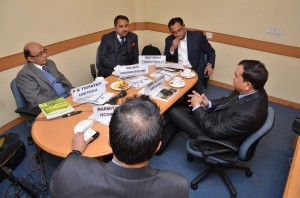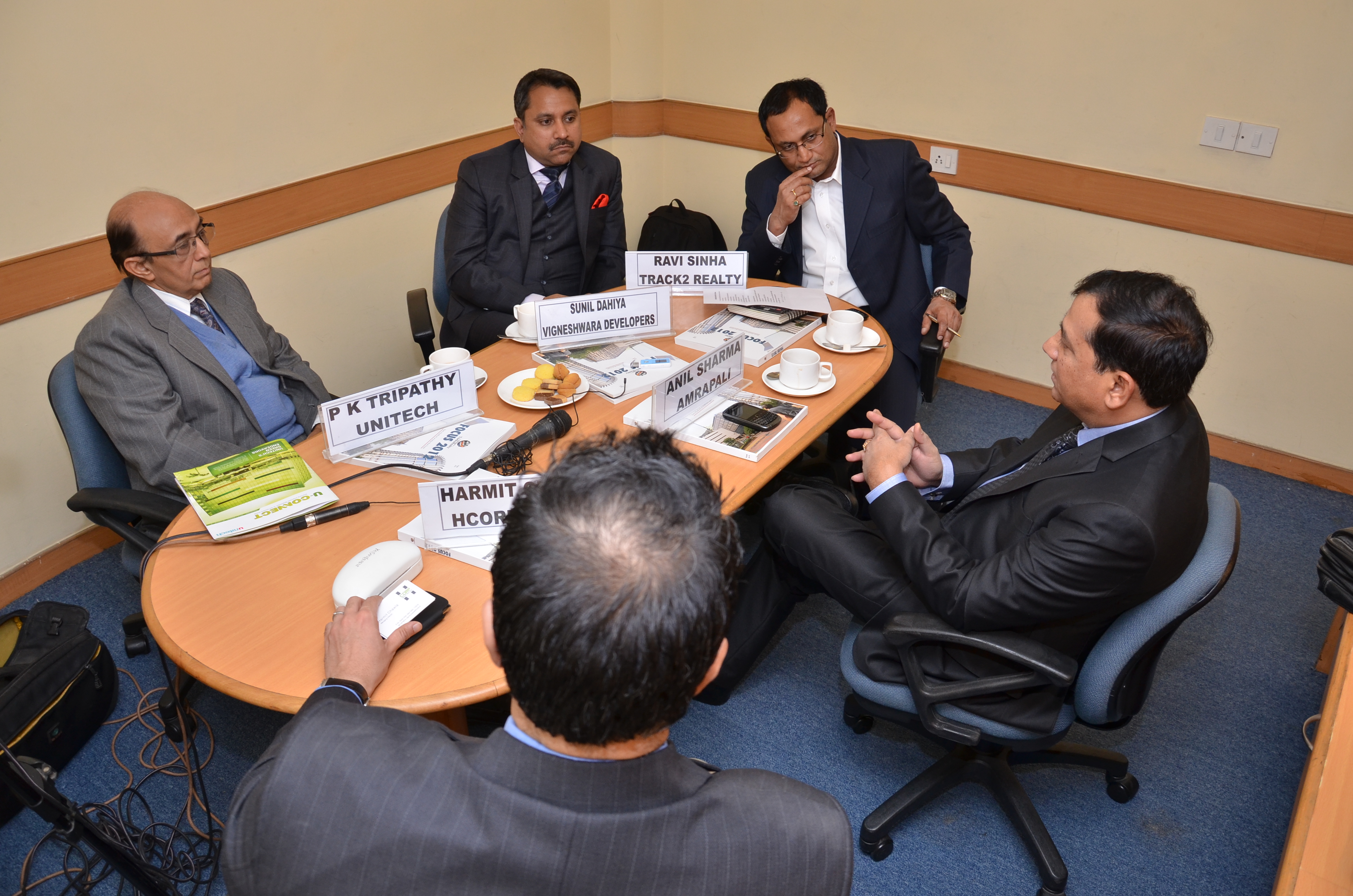 Panelists—Dr Anil Sharma, CMD, Amrapali Group
Panelists—Dr Anil Sharma, CMD, Amrapali Group
Sunil Dahiya—Sr Vice President, NAREDCO & MD Vigneshwara Developers
Harmit Chawla—MD, HCorp Realty
PK Tripathi—President, Unitech
Moderator—Ravi Sinha, CEO & Managing Editor, Track2Realty
Ravi Sinha: I welcome all the panelists in the final roundtable for Track2Realty Focus 2013. As we come to the end of 2012, it is time to look in & look ahead as far as the prospects of the realty sector are concerned. In this discussion, we would try to wrap up the year 2012, and see where the sector has been heading to in 2013. So, when you look at the year Mr Sharma, don’t you think “oh! what a waste.” So much was expected this year but nothing has moved forward, be it in terms of administrative reforms, fiscal reforms or land reforms; nothing has gone right for the sector.
Anil Sharma: You are right. I do agree with you because real estate had a lot of expectation in the beginning of 2012. What we saw was a lot of turmoil situation; it was there right from the land row and the administrative problem. Then, there were certain issues related to policy, so many acts and by-laws and bills being brought in the parliament.
But ultimately, the year is ending without any significant improvement and I would say that it was really a rough weather for the real estate sector. If you remember from the beginning the rate of interest was too high. The RBI norms for the developers were stringent.
Thereafter, lot of stalemate and a complete mess was there, when Urban Development Ministry tried to co-ordinate the entire state and bring a consensus. But, at last we have nothing in our hand. Everything is in suspense and in the process. Then, there were a lot of debate on Real Estate Regulatory Bill, but there were a lot of shortcomings in the bill.
So, still there is debate as to whether it will be tabled again in the Parliament. Secondly, the Land Acquisition Bill has seen a lot of turmoil. Thirdly, I would say that for the regional master plan, the Urban Development Department is trying to create a consensus that if you go for a big township, you have to provide certain safeguards to create EWS (Economically Weaker Section Housing), and still every state has got different views.
Ravi Sinha: When you look at this year, don’t you think Mr Chawla it has been full of contradictions. The sector wanted something different and the government was ready with something different. Sector wanted a different model to regulate; states were not ready to do that. So, do you think it was a year of contradictions in the sector?
Harmit Chawla: I won’t put it as contradictions as every stakeholder has his own view. State has its view, Centre has its view in terms of the policy and the sector has its view as to what is beneficial to them at the end of the day as far as the working is concerned. So, going by the point that we have been debating on the land, as Mr Sharma has also said, the fact has always been that it has been a federal issue.
The state has said that the land belongs to the state and at the end of the day they have the final call in terms of how things are going to move on that. And hence the land bill has not come, the regulatory bill has not come, and the situation has stayed the same what was two years back. So, developers today are functioning with the same lacunae that existed even two years back.
Ravi Sinha: I m not sure of how many in the sector will agree with you that we are standing where we were standing by 2010 or 2011. Mr Tripathi, do you think something has drastically gone wrong for the sector in terms of the basic psychology within which the real estate community operates or is it the same as a couple of years back?
PK Tripathi: As far as the basic psychology is concerned, what Mr Chawla is saying is correct. It remains at a status quo in the operational viewpoint. Now if you look at the policy issue, there have been efforts but it has remained at status quo since there were so many stakeholders—state versus centre, government versus the NGO and the customers. Everybody has their own aspirations and they wanted that to be met. Meeting all these aspirations takes time.
I have worked for the government and understand that either you remove everything in one go, like in 1991 where the industrial licensing was done away with one go. There was a tremendous change. You could sit at home and get a licence.
Now look at it from the government side, where CCI has emerged, some states have started the regulations. And the Central Government made an effort to try to put together two things. One is, Central Regulatory Authority which coordinates itself with the state government. So the Central government could come out with a framework that is universal with a policy issue, but the implementation can be done by the state. That has to emerge; there is no question on that.
Whatever we were doing as a builder or as a state regulatory authority, that will undergo change through technology, due to the demand of the customers, NGO’s and so many stakeholders who are evolving. The first thing is that it is a process which may not have achieved what it wanted, but may be next year we should be able to go somewhere.
Ravi Sinha: I think the industry bodies have also moved a bit in terms of doing a balancing act with the government. So, keeping that in mind how do you summarise the year Mr Dahiya?
Sunil Dahiya: If I look at the start of 2012 when we strived to become an industry, I see it as a manufacturing process and I find a factory of real estate in which raw material stopped coming in 2012. The assembly line became totally shredded so the production line got hampered. Outside, the promoters were struggling for funding.
So all in all, what I saw in 2012 was disarray in the entire manufacturing process and outside the factory the larger macro issues that reforms, laws etc were again on the drawing table. This is how I see 2012 and 2013 should be the activation of the factory.
…..to be continued





